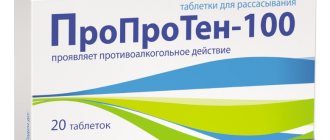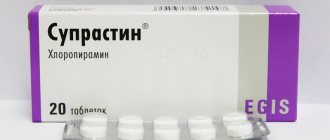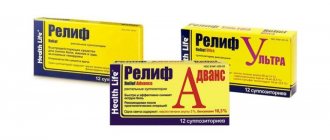- Release form and composition
- Indications for use
- Contraindications
- Mode of application
- Side effects
- Special instructions and drug interactions
- Vitagamma analogues
- Terms and conditions of storage
- Vitagamma price
Vitagamma is a medicinal product containing B vitamins, which are used to treat inflammatory and degenerative diseases of the nervous system and musculoskeletal system. They are represented by thiamine hydrochloride (vitamin B1), pyridoxine hydrochloride (vitamin B6) and cyanocobalamin (vitamin B12). The drug also contains lidocaine, which is a local anesthetic and is used to reduce discomfort during drug administration.
B vitamins have a pronounced neurotropic effect:
- in high doses they have an analgesic effect on inflamed nerve tissue;
- help improve blood circulation;
- normalize the functioning of the nervous system;
- improve the condition of the hematopoietic system and stimulate the formation of blood cells
Thiamine, or vitamin B1, has the following biological functions:
- regulates the functioning of the gastrointestinal tract, increases tone and stimulates peristalsis of the stomach and intestines;
- plays the role of a coenzyme involved in the metabolism of fats, carbohydrates and proteins;
- participates in energy synthesis;
- promotes the copying of genetic material that is transferred from cell to cell during their division;
- improves the functioning of the heart, vascular and endocrine systems;
- stimulates appetite;
- has a pronounced positive effect on the condition of the nerve fibers of the central and peripheral nervous system;
- enhances the effect of pyridoxine.
Pyridoxine, or vitamin B6, is primarily a stimulator of the metabolism of all nutrients. He:
- performs the function of a coenzyme in the digestion of proteins and amino acids, assimilation of protein substrates, fats and carbohydrates;
- participates in the formation of red blood cells and hemoglobin, improving the condition of the heart and blood vessels;
- ensures uniform consumption of glucose by cells;
- enhances the effect of thiamine.
Cyanocobalamin, or vitamin B12, takes part in carbohydrate, protein and lipid metabolism. Its functions:
- stimulation of tissue regeneration;
- regulation of hematopoiesis and functional activity of the liver and nervous system;
- activation of blood clotting;
- decrease in the concentration of atherogenic fractions of cholesterol in the blood;
- as a cofactor, participation in many enzymes that are necessary for the normal metabolic process;
- reduction of folic acid to tetrahydrafolic acid;
- formation of DNA, creatinine and methionine;
- participation in the synthesis of the lipotropic factor - choline, which is involved in the formation of succinic acid, which is part of the myelin fibers;
- increasing the tolerance of erythrocytes to hemolysis.
Lidocaine is a local anesthetic. Since the process of administering vitamins is accompanied by unpleasant sensations, it is necessary to reduce them.
Pharmacodynamics and pharmacokinetics
The effect of this drug is determined by the properties of the substances that make up its composition. As you know, vitamins B1, B6 and B12 are characterized by the regulation and normalization of protein, carbohydrate and fat metabolism. An improvement in the functioning of the nervous system was also noted.
Thanks to thiamine (B1), protein glycolysis is prevented and antioxidant activity is manifested. In addition, this component takes part in regulating the conduction of nerve impulses.
B6 or pyridoxine is a participant in the synthesis of neurotransmitters, for example, dopamine, norepinephrine and other decarboxylation reactions, as well as over- and deamination of amino acids, preventing the accumulation of ammonia and accelerating regenerative actions in nervous tissue.
The substance cyanocobalamin (B12) is required for normal hematopoiesis and takes part in the formation of myelin tissue.
Indications for use
Vitagamma is prescribed for diseases of the nervous system of various origins:
- neuritis and polyneuritis;
- neuropathy and polyneuropathy of various origins;
- polyneuropathy resulting from diabetes mellitus or alcohol intoxication;
- decreased sensitivity and transient paralysis of peripheral nerves;
- neuralgia;
- cramps and muscle spasms, manifesting mainly at night;
- various lesions of the nerve plexuses and ganglia;
- osteochondrosis and other degenerative diseases of the spine, accompanied by neurological symptoms: damage to the spinal roots, lumbago with sciatica, increased muscle tone with the development of painful compactions.
Contraindications
The use of this product is not recommended for:
- hypersensitivity to its components;
- lactation, pregnancy;
- thrombosis and thromboembolism;
- severe forms of decompensated heart failure;
- erythrocytosis;
- erythremia;
- heavy bleeding;
- arterial hypotension;
- shock states;
- childhood.
It is necessary to carry out treatment with special caution for patients with Wernicke encephalopathy, premenopausal and menopausal syndrome in women, severe angina pectoris, benign and malignant neoplasms, accompanied by megaloblastic anemia and vitamin B12 deficiency, a tendency to form blood clots, in old age.
Special instructions and drug interactions
- Vitagamma is intended exclusively for intramuscular use. When administered intravascularly, symptomatic therapy is carried out under the close supervision of a physician;
- with long-term therapy exceeding six months, neuropathy may develop;
- the drug does not affect the speed of psychomotor reactions, and is approved for use when driving a car and performing work that requires increased concentration;
- vitamin B1 is not used with solutions containing sulfite groups due to its complete disintegration in the composition of such solutions;
- vitamin B1 is not recommended for use with carbonates, citrates, barbiturates and copper-containing drugs as a result of its instability in alkaline and neutral solutions;
- vitamin B6 has a weakening effect on levodopa (antiparkinsonian drug);
- Vitamin B12 is not used with vitamin B12. With (ascorbic acid) and preparations of heavy metal salts due to their incompatibility.
Side effects
Sometimes treatment with Vitagamma leads to the development of increased sweating, tachycardia, and acne. Allergic skin reactions, such as itching, urticaria, and rash, may occur. Some systemic reactions are also possible: difficulty breathing, anaphylactic shock, Quincke's edema.
When the drug is administered too quickly, patients may experience dizziness and headache, vomiting, tachycardia, arrhythmia, bradycardia, convulsive state, cardialgia and agitation.
Side effects
- hypersensitivity reactions;
- hyperhidrosis;
- acne, allergic rashes accompanied by itching;
- tachycardia;
- anaphylactic symptoms;
- burning at the injection site.
In the case of rapid accidental introduction into a vessel or tissue with increased blood supply, hypervitaminosis may occur, manifested by impaired consciousness, dizziness, muscle cramps, vomiting, decreased heart rate or arrhythmia.
Reviews about Vitagamma
Drugs with similar effects are very popular. At the same time, reviews about Vitagamma are usually positive. A significant advantage is that Vitagamma injections are well tolerated, that is, there are practically no side effects. In general, many people prefer to receive vitamins by injection, because this way they are distributed faster in the body.
Although some patients are interested in whether there are Vitagamma tablets, since it is more convenient for them to take this particular form. However, tablets are often broken down in the digestive tract.
Experts also clarify that the drug is a vitamin complex, and not a pain reliever or stimulant. Therefore, it is not able to eliminate disorders and can only be used as part of combination therapy. Thanks to its use, the body receives the necessary substances, the lack of which reduces the usefulness of the therapeutic process.
Sometimes there are also negative reviews. For example, some patients are not satisfied with the pain of injections. However, most people prefer to choose this particular product, since it is quite effective and its cost is quite reasonable.
By the way, this drug is not always used for its intended purpose. It is included in masks that accelerate hair growth. The drug is actively used by athletes who are confident that such injections contribute to the rapid recovery of the body after injuries and illnesses.
Vitagamma analogues
Vitagamma has several complete analogues that have the same composition, dosage form and indications, but differ in the severity of the pharmacological effect and manufacturers:
- Binavit is a drug from a domestic manufacturer from the group of vitamin preparations, Armavir Biofactory (Russia);
- Vitaxon, Farmak PJSC (Ukraine);
- Compligam V, Sotex PharmFirma (Russia);
- Milgamma, a vitamin medicine that has a similar composition to Vitagamma, is in wide demand, despite its higher pricing. Belongs to the German manufacturer Solupharm (Germany);
- Trigamma; Moskhimfarmpreparaty im. N.A. Semashko (Russia).
Instructions for use "Vitagamma": reviews and analogues
Vitamin preparation B 1, B 6, and vitamin B 12 , regulates fat and protein metabolism, contributes to the general normalization of metabolism , improves the functioning of the autonomic, motor, and sensory nerves. Available in tablets and ampoules.
| Injection | Dosage in one ampoule, mg |
| Lidocaine hydrochloride | 20 |
| Pyridoxine hydrochloride | 100 |
| Thiamine | 100 |
| Cyanocobalamin | 1 |
Indications
- Neurological diseases that are characterized by a lack of B vitamins.
- Nervous system lesions
- Polyneuritis,
- Paresis,
- Neuralgia,
- Polyneuropathy,
- Neuritis.
Vitagamma :: Instructions, analogs, active ingredient
Russian name: Vitagamma. English name: Vitagamma.
(Data taken from the active ingredient pyridoxine+thiamine+cyanocobalamin+
In a place protected from light, out of reach of children, at a temperature not exceeding 15°C. Shelf life – 2 years.
On prescription.
Contraindications: pyridoxine+thiamine+cyanocobalamin+[lidocaine].
Hypersensitivity; acute heart failure. Chronic heart failure in the stage of decompensation.
Severe disturbances in the conduction system of the heart; pregnancy and breastfeeding (in a daily dose of up to 25 mg, vitamin B6 does not pose a safety risk during pregnancy and breastfeeding; the combination contains 100 mg of vitamin B6. Therefore, it should not be used during these periods); children under 18 years of age (safety and effectiveness of use have not been established).
Contraindications for pyridoxine.
Hypersensitivity.
Thiamine contraindications.
Hypersensitivity.
Contraindications for cyanocobalamin.
Hypersensitivity, hypercoagulation (including in acute thrombosis), erythremia, erythrocytosis.
Contraindications for lidocaine.
Hypersensitivity, history of epileptiform seizures to lidocaine, WPW syndrome, cardiogenic shock, sinus node weakness, heart block (AV, intraventricular, sinoatrial), severe liver disease, myasthenia gravis.
Side effects of pyridoxine+thiamine+cyanocobalamin+[lidocaine].
The frequency of adverse reactions is given in accordance with the WHO classification: very often (≥1/10); often (≥1/100 to
Source: https://kiberis.ru/?p=12897
Vitagamma
Indications for use Vitagamma
Indications for taking Vitagamma for diseases of the spine:
Contraindications
Vitagamma is contraindicated in certain diseases and physiological conditions of the patient:
- Allergy to the drug and its components;
- Thromboembolism;
- Thrombosis;
- Children under 16 years of age;
- Arterial hypotension;
- Heart failure, severe course, exacerbation;
- State of shock;
- Pregnancy;
- Lactation period;
- Erythrocytosis;
- Erythremia.
Operating principle
The principle of action of the drug Vitagamma is based on the combination of its components. Vitamin B1 (thiamine) regulates carbohydrate metabolism, improves and restores the transmission of nerve impulses along nerve fibers and nodes, and removes lactic and pyruvic acids that are toxic to the body.
Vitamin B6 (pyridoxine) is involved in the formation of mediators that activate, accelerate and potentiate the functioning of the nervous system (adrenaline, serotonin, dopamine, histamine and tyramine), and regulates protein metabolism.
Vitamin B12 (cyanocobalamin) regulates metabolism in cells and tissues, accelerates the formation of choline, creatinine, nucleic acids and some other compounds, and also reduces anemia. To some extent reduces pain caused by irritation of nerve endings.
Lidocaine helps reduce pain during injection (the administration of this drug is quite painful).
How to use Vitagamma
Vitagamma solution is injected deep into the gluteal muscle, 1 ampoule (2 ml) per day until the condition is alleviated and the symptoms of the disease are reduced, on average 5-7 days. Alya continue therapy 2-3 times a week for another 14-21 days. If it is necessary to continue treatment, it is recommended to transfer the patient to tablet forms of analogues of the drug.
Side effects of Vitagamma
Side effects from taking Vitagamma do not occur often, but their number is quite large:
- Vomit;
- Increased heart rate (tachycardia);
- Anaphylactic shock;
- Nausea;
- Increased bowel movements (diarrhea);
- Dizziness;
- Increased irritability;
- Quincke's edema;
- Pain or discomfort in the abdominal area;
- Changes in blood pressure;
- Hives;
- Rash and itchy skin;
- Increased sweating;
- Headache.
In case of drug overdose, some symptoms may occur:
- Impaired sensitivity;
- Seizure activity;
- Abdominal pain;
- Rash and itchy skin;
- Increased irritability and mood swings;
- Liver failure;
- Pain in the heart area.
Treatment of this condition is symptomatic.










